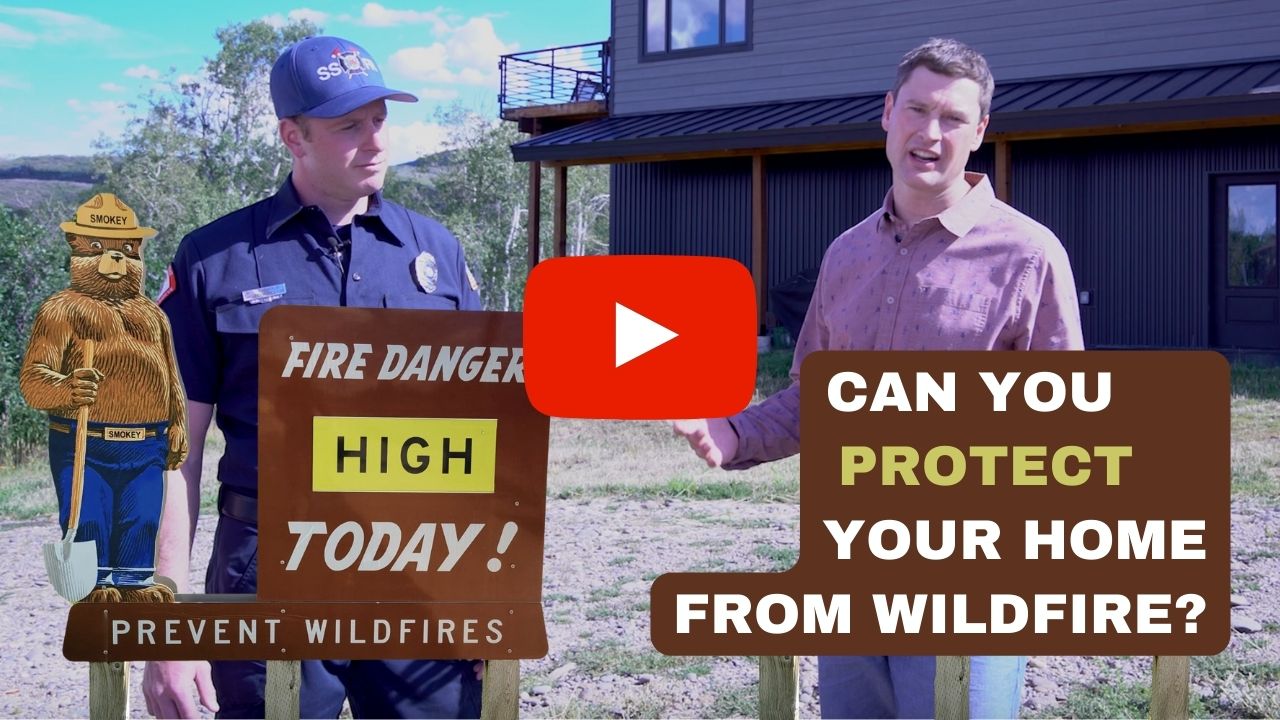Steamboat Springs local firefighter, Nick Kuchulis, and I discuss how to prepare and protect your home from wildfires.
We share with you some maintenance action items that can keep your home safer from the threat of wildfires. We also discuss some construction projects that are worth considering when remodeling or building. These maintenance and improvement ideas provide protection, and can add value to a home when it comes time to buy or sell.
One-third of all US homes are in the wildland-urban interface, the area where flammable vegetation and homes meet. This is the area where homeowners should be particularly aware of the threat of wildfires. As a homeowner, it’s important to know that it is first and foremost your responsibility to protect your home. To do this, we recommend that you start with your house and work your way out.
When working on your home, the trick is to decrease the chances of any structural ignitability. That just means how likely the structure is to ignite from materials on or in the structure. The biggest threat to structure ignitability is the embers from fires in the area.
So to keep your house safe,
• Remove all leaves, needles, and any other debris from decks, roofs and gutters
• Create 6” of vertical clearance between the ground and home siding
• Screen vents in the attic, roof, eaves, and foundation with 1/8 inch metal mesh to prevent embers from entering these penetration points. There’s also some building choices you can do to protect your home if you are remodeling or building new.
• Ensure the roof has a Class A fire rating.
• Non combustible siding, such as corrugated metal on at least the first level of the home
• Use tempered glass for windows: two or more panes are recommended That stuff helps to reduce the structural ignitability, but creating a defensible space on the perimeter of the home takes your fire mitigation to the next level.
To do this, the defensible space around your home is broken up into 3 zones.
- Zone 1 is 0-5 feet from your home. This area requires the most attention.
- Rake and remove flammable debris such as pine needles
- Treat or mow shrubs that re-sprout every 3-5 years o Trim tree limbs 10 feet above the ground to prevent ladder fuels.
- Hardscape around your home by adding noncombustible materials such as pavers or trap rock.
- Do not store firewood or other combustible materials inside this zone
- Zone 2 is 5-30 feet from the house.
- Mow grasses to 4”
- Avoid storing surface fuels such as logs, branches, slash, or mulch
- Remove enough trees to create at least 10’ or space between crowns
- Remove ladder fuels under remaining trees
- Remove stressed or dying trees or shrubs
- Zone 3 is 30-100’ from the house
- Watch for hazards associated with ladder fuels
- Consider creating openings or meadows between clumps of trees
- Slash treatment should occur in this zone.
Initially, these steps can be daunting, but once you spend the time and invest in the resources to create a wildfire mitigation plan, the continued maintenance is vastly reduced.

Comments